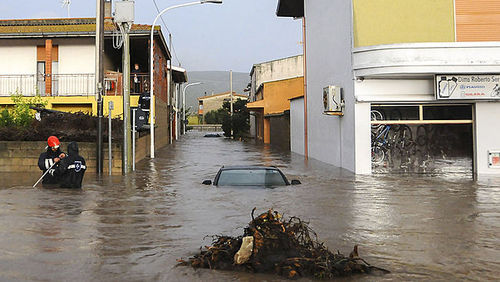Conditions were ripe overnight Friday into Saturday morning in Central Italy for severe thunderstorms – these brought very large, damaging hail to the region.
[map autofit=”1″ disable_scrollwheel=”1″] [pin]Tyrrhenian Sea[/pin] [pin]Pozzuoli[/pin] [/map]A large upper level trough to the west of Italy, slowly digging eastward provided sufficient lift, as well as strong upper level winds contributing to sufficient shear being in place for severe storms. Ahead of this trough, a large area of very warm, moist air originating from the Mediterranean was present. In this warm and unstable environment, MLCAPEs of 3,000J/kg were in place which was more than enough to sustain strong updrafts. Finally, slicing into this airmass was the cold front which acted as a mechanism to trigger the storms. With all of this combined ESTOFEX (European Forecasting Storm Experiment) had issued a maximum level three watch area – meaning that there was a 15% chance of “extremely severe weather” being reported within the area of concern.
This forecast definitely checked out. On Saturday morning, local time, a supercell fired over the Tyrrhenian Sea (which later evolved into a well-organized MCS) and brought with it 10-12cm diameter hail to the city of Pozzuoli Italy, located near Naples. To put this into perspective, you would need an updraft velocity speed of roughly 170km/h to suspend a hailstone of that size. Widespread damage occurred to an estimated 70,000 buildings, vehicles could be seen with major dents and blown out windshields and crops/livestock sustained major damage in the area, thankfully there were no injuries to residents reported.





